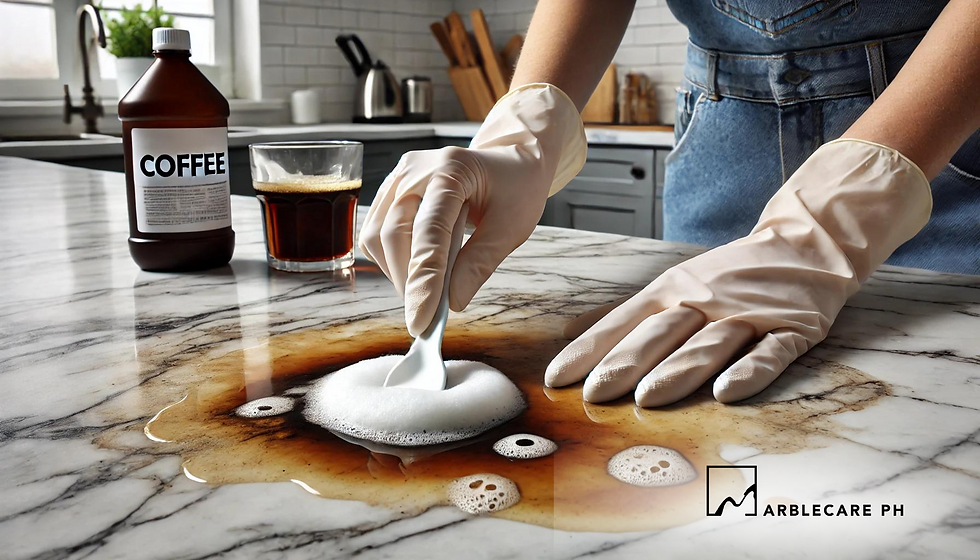Top 5 Common Marble Stains and How to Remove Them
- Ate Jiselle
- Jul 17, 2024
- 2 min read
Marble surfaces are renowned for their elegance and beauty, but they are also susceptible to staining. Different substances can leave unsightly marks on marble, which, if not treated promptly, can become permanent. Understanding how to handle these stains can help you maintain the pristine condition of your marble surfaces.
Here are the top five common marble stains and how to remove them effectively.
1. Oil-Based Stains
Common Sources: Cooking oil, grease, milk, and cosmetics.
How to Remove:
Blot the excess oil with a paper towel.
Mix a poultice using baking soda and water to form a thick paste.
Apply the paste to the stain, cover it with plastic wrap, and let it sit for 24-48 hours.
Remove the plastic wrap and allow the paste to dry completely.
Scrape off the dry paste and rinse the area with water.

2. Organic Stains
Common Sources: Coffee, tea, wine, fruit, and leaves.
How to Remove:
Clean the area with a mixture of warm water and mild dish soap.
If the stain persists, apply a poultice made of baking soda and hydrogen peroxide.
Cover with plastic wrap and let it sit for 24 hours.
Remove the plastic wrap, let the poultice dry, and then scrape it off.
Rinse the area with water and dry it thoroughly.

3. Rust Stains
Common Sources: Metal items like cans, nails, or garden tools.
How to Remove:
Apply a commercial rust remover specifically designed for marble. Follow the manufacturer’s instructions carefully.
Alternatively, create a poultice with a mixture of diatomaceous earth and a rust remover.
Apply the paste, cover with plastic wrap, and let it sit for 24-48 hours.
Scrape off the dried paste, rinse the area, and dry it completely.

4. Ink Stains
Common Sources: Pens, markers, and inkjet printer cartridges.
How to Remove:
For light-colored marble, use a mixture of hydrogen peroxide and a few drops of ammonia.
Apply the solution to the stain with a cloth.
For dark-colored marble, use acetone or a lacquer thinner.
Blot the stain gently until it is removed, and then rinse with water and dry.

5. Water Spots and Rings
Common Sources: Hard water deposits from glasses or bottles.
How to Remove:
Mix a solution of baking soda and water to form a paste.
Apply the paste to the water spots and gently rub in a circular motion with a soft cloth.
Rinse with water and dry with a clean cloth.
For persistent spots, use a marble polishing powder according to the manufacturer’s instructions.

Maintaining the beauty of your marble surfaces requires prompt attention to stains. By using the right cleaning methods and materials, you can effectively remove common stains and keep your marble looking its best. For professional marble care and restoration, consider contacting Marblecare PH. Our expert team is equipped with the knowledge and tools to handle all your marble maintenance needs.


Comments